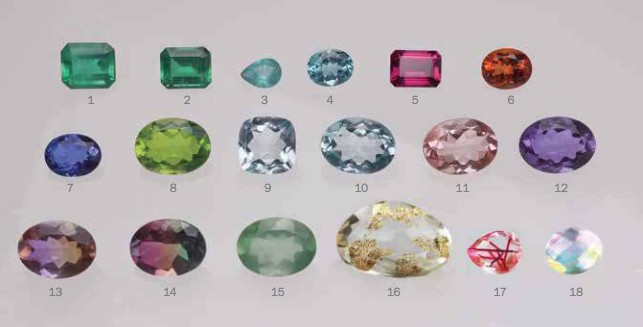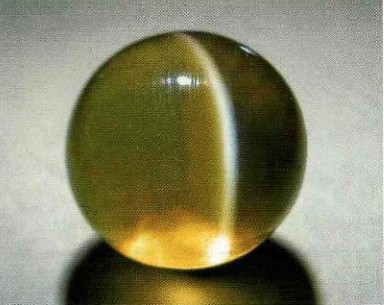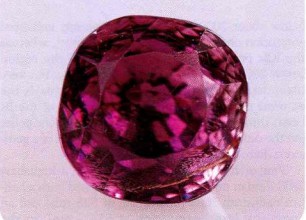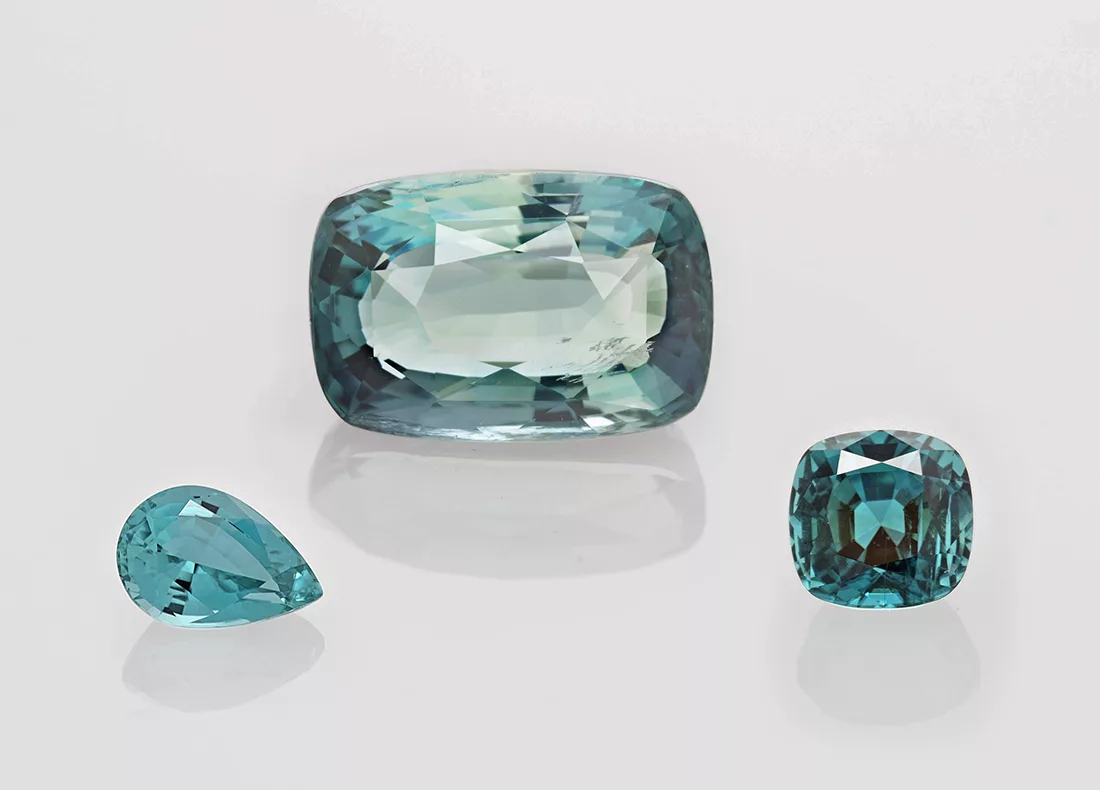
Grandidierite and other Rare Gemstones at SSEF
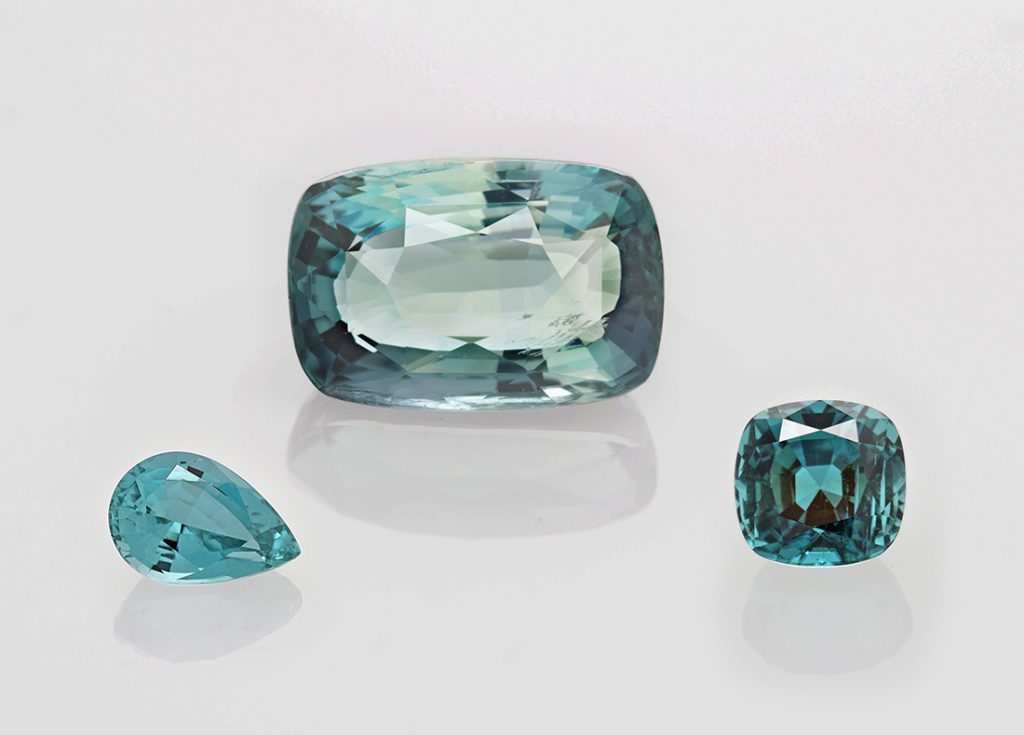
by Dr. Michael S. Krzemnicki, first published in Facette 24 (February 2018)
In addition to the extensive article about rare collector stones in the last SSEF Facette (2017, No. 23, pages 8 – 10), we would like to present in this issue three minerals which were tested in the past few months at SSEF and which at least partially made headlines in the news for collectors and aficionados of such gemmological rarities.
Grandidierite from Madagascar
The most exciting certainly is a new find of grandidierite from southern Madagascar (Vertriest et al. 2015, Gems & Gemology; Bruyère et al. 2016, Gems & Gemology) close to the town of Tranomaro, near the original type-locality at the cliffs of Andrahomana (Madagascar). Grandiderite, a complex Mg-Fe aluminous borosilicate of subtle bluish green to greenish blue colour was first described by Alfred Lacroix in 1902 and named after Alfred Grandidier (1836–1912), a French explorer and naturalist who extensively studied the natural history of Madagascar.
Having so-far only seen tiny and rather included samples, we were stunned to recently see three faceted grandidierite samples of exceptional purity and size during the last few months, with the largest of these stones showing an impressive size and weight of 12 ct.
Fluorite from the Swiss Alps
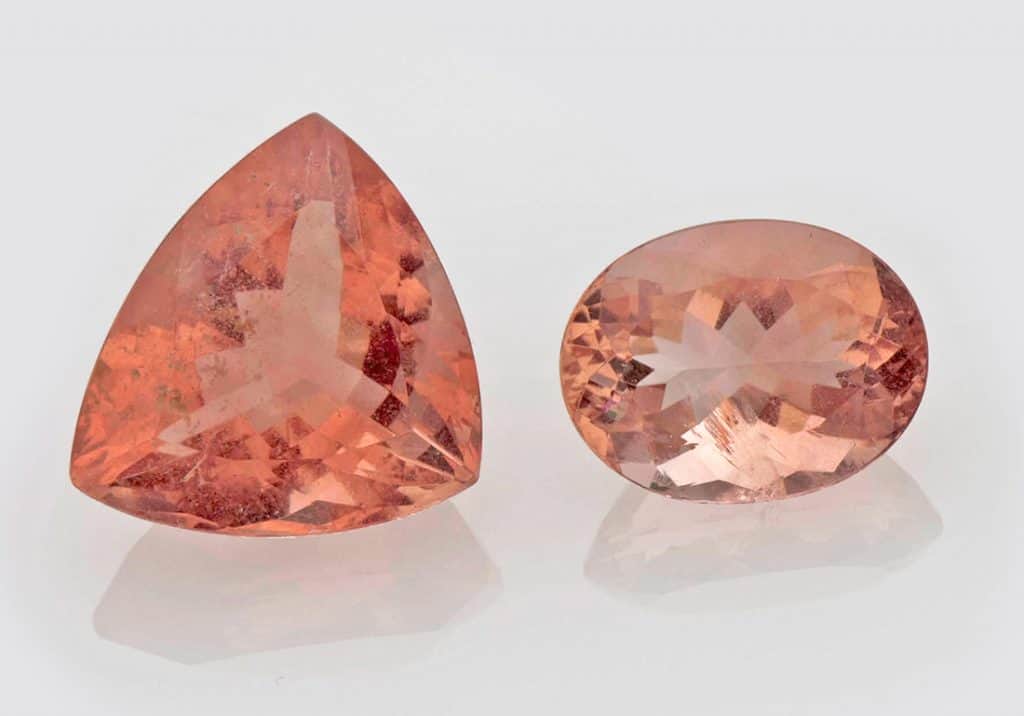
Not so new as a collector stone, but for us at SSEF a first-timer was a pair of faceted pink fluorite from the Swiss Alps (Figure 2). These pink fluorites are rare and sought after minerals of late-Alpine hydrothermal formation. They can be found in clefts together with rock crystals, feldspar and other minerals. The studied samples showed a nice salmon- like pink colour, very characteristic for this material from Switzerland, and contained numerous tiny fluid and solid inclusions. The pink colour of these fluorites is linked to the presence of yttrium (REE), as could be confirmed by EDXRF analyses of our samples. As a consequence of the presence of yttrium and possibly traces of further REEs in these fluorites, the Raman spectroscopic identification of the small colourless prismatic inclusions at this point still remains a mystery. Multiple series of intense photoluminescence peaks from these REEs are overlapping any possible structural peaks in the Raman spectra, measured with our green argon laser (514 nm).
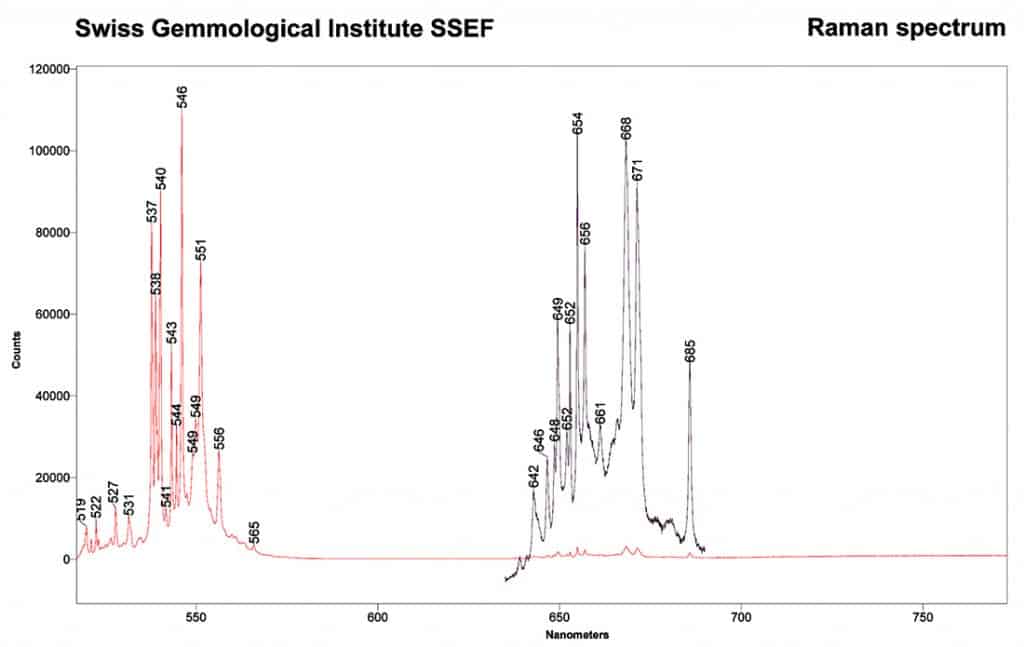
Chromium-rich red musgravite from Mogok
And finally we purchased for our research collection a small intensely red musgravite crystal, originating from the Mogok Stone Tract. This area has already in the past proven to be a treasure trove not only for ruby, sapphires, and spinels, but also for a wide range of very rare and exotic minerals and gemstones, such as jeremejevite, poudrettite, painite and johachidolite, to name a few.
Raman analysis revealed matching peak positions with reference spectra (RRUFF database) of musgravite, renamed by the International Mineralogical Association IMA as magnesiotaaffeite-6N3S due to crystal structural considerations (Armbruster 2002).
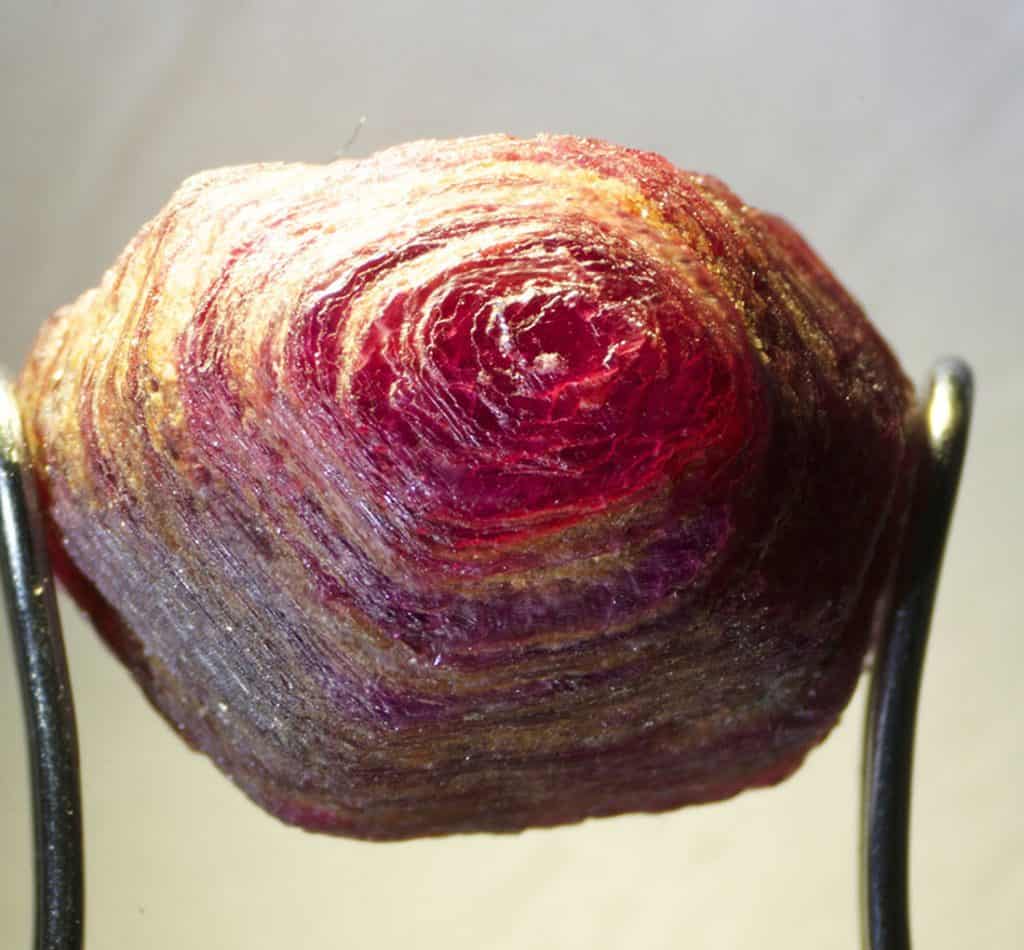
The intense red colour is due chromium which – to our knowledge – is far higher (approximately 2 wt% Cr2O3) than in any musgravite from Myanmar, Sri Lanka, East Africa or Madagascar so far reported in scientific literature. Further studies are ongoing to characterise this highly uncommon red musgravite from Mogok.
